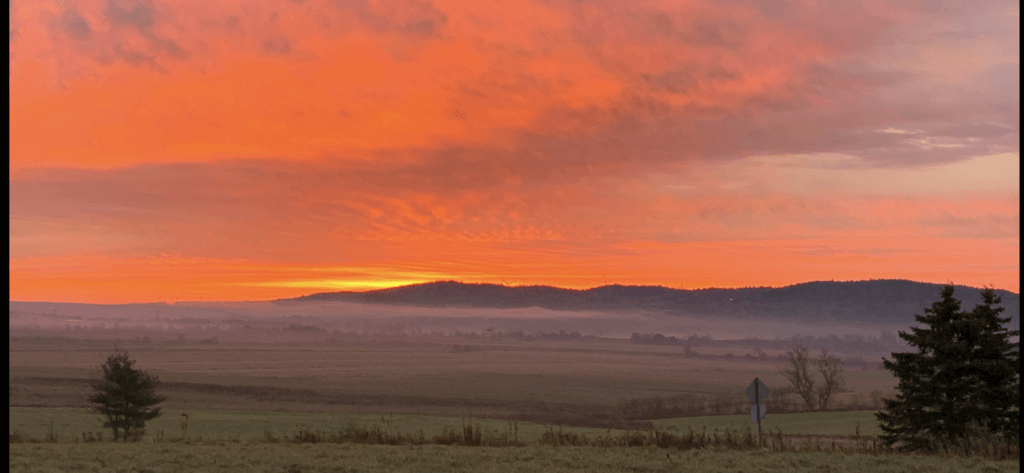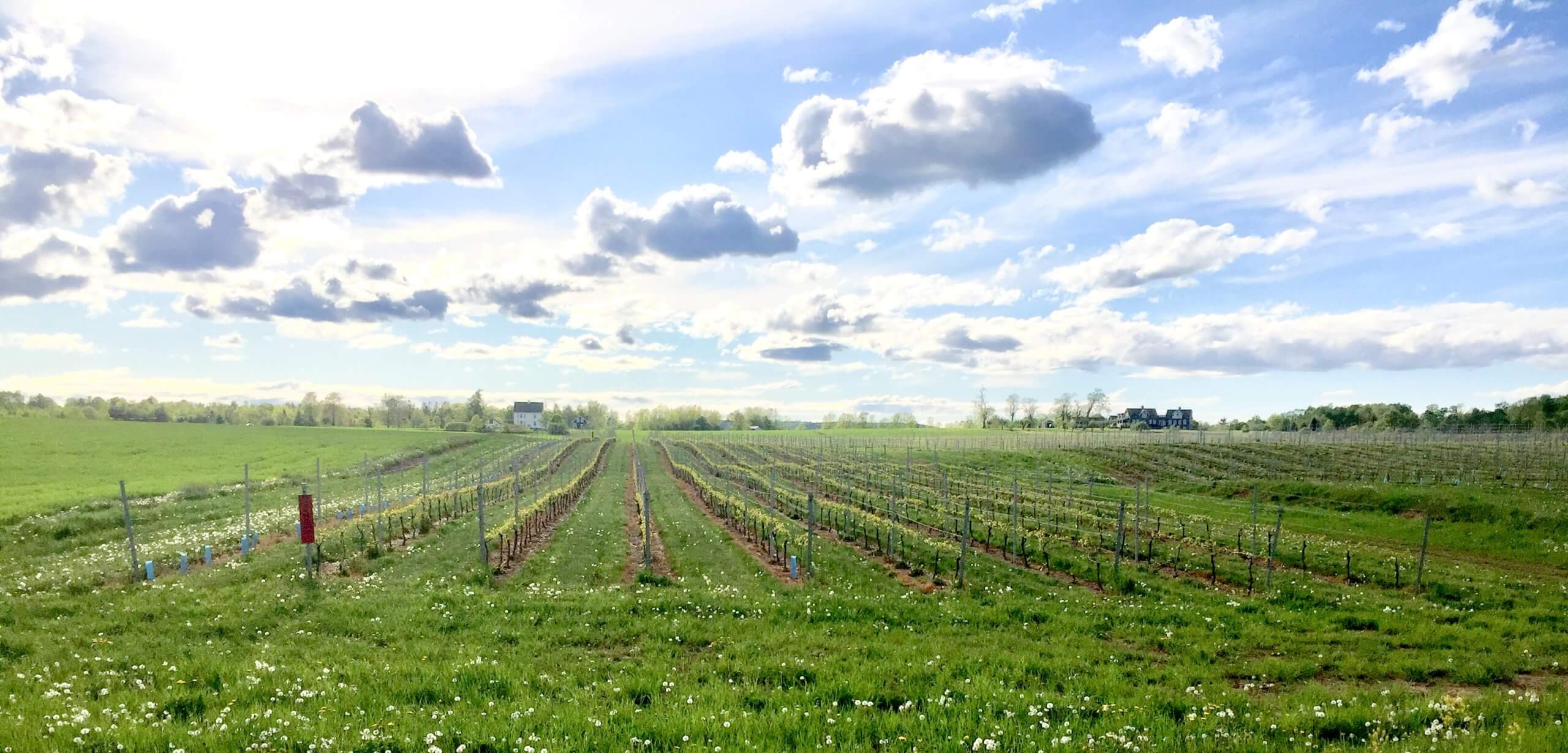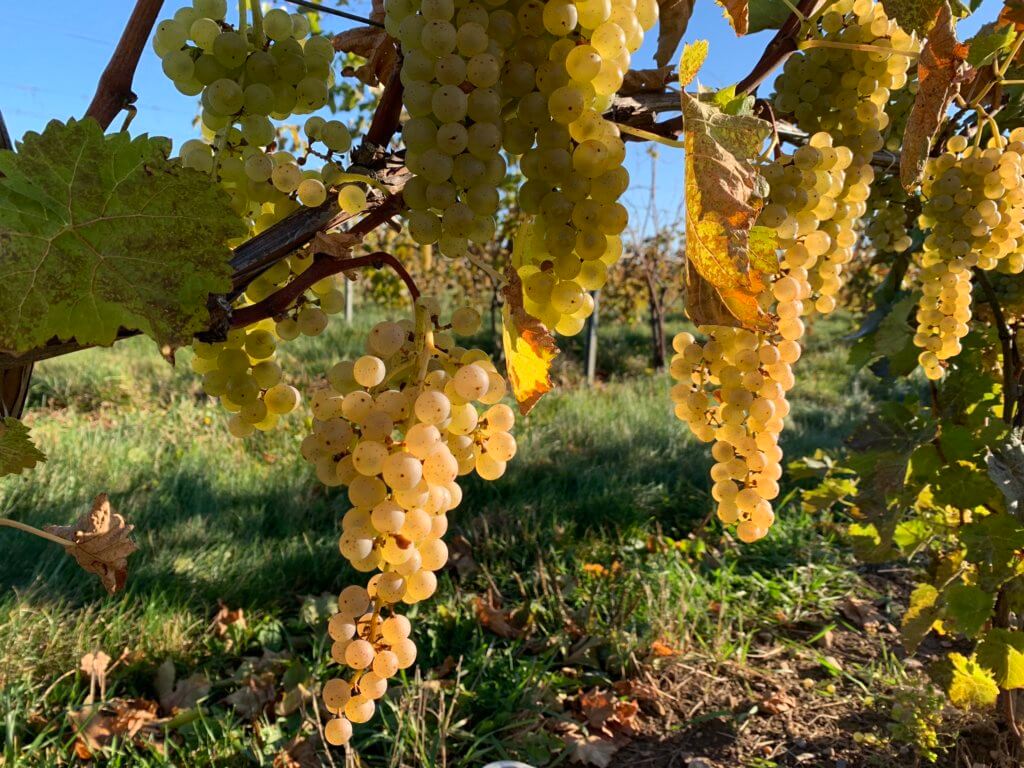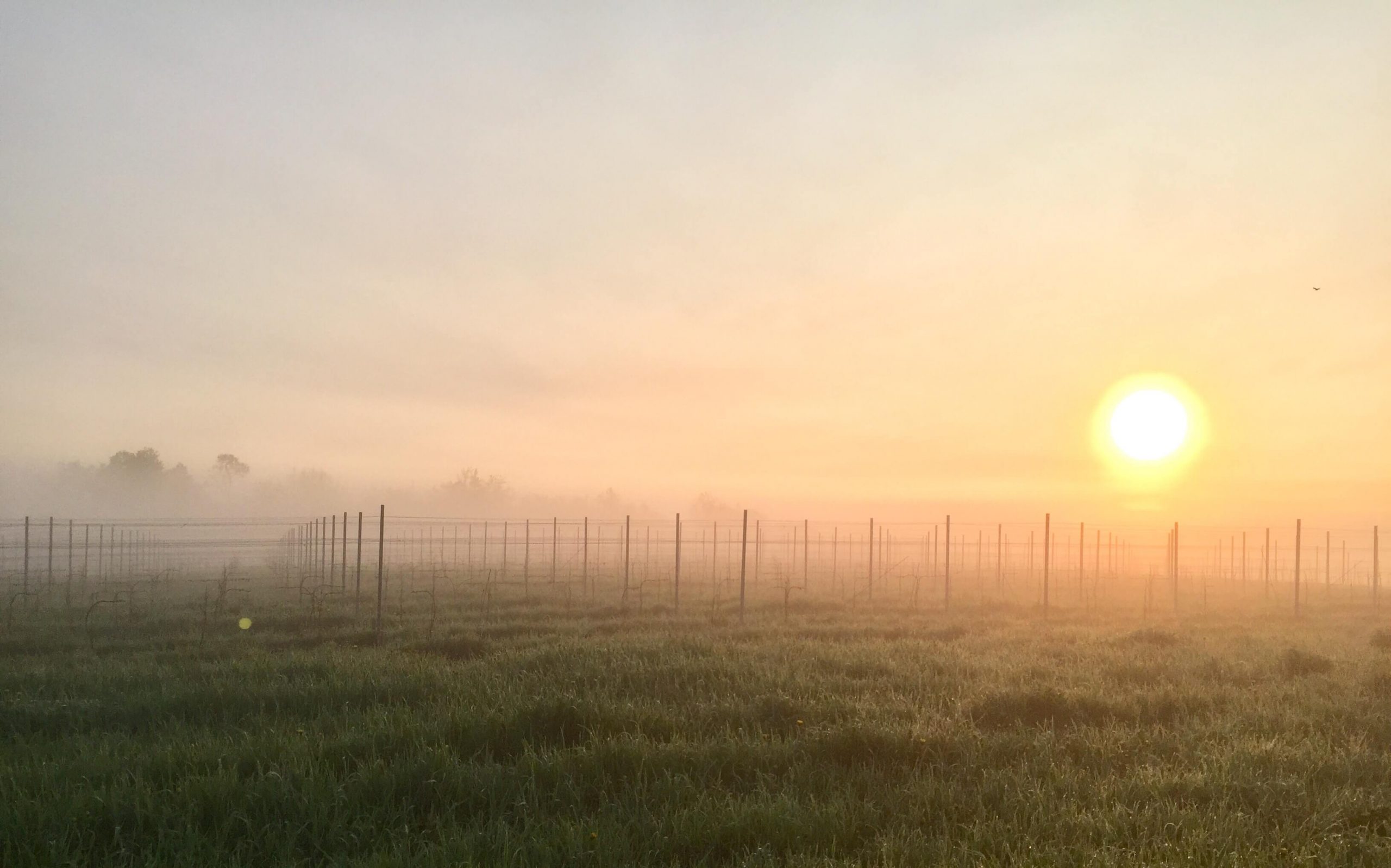- Extent
- At between 4 and 6 am June 4th 2018 the temperature dropped to -2 to -3 C in Upper Falmouth, Nova Scotia. There was adequate warning from the various weather apps, but the most accurate one was “The Weather Channel” (-1C predicted). The most inaccurate one was “AccuWeather” (+2C predicted). By mid morning it was evident that there was extensive damage across the Annapolis Valley. Vines at Johnston Vineyard turned limp by 8 am when the ice melted and by noon the smell of rotting vegetation was in the air. All 32 acres of vines at Johnston Vineyards were severely burned with no green vegetation evident anywhere. A quick assessment of the local area revealed 90-100% loss of vine vegetation in the West Hants area with between 50-90% loss in the area extending west to Canning. There were verbal reports of damage further to the west. The most severe frost appeared to be at the head of the Valley in the Falmouth/Windsor area.
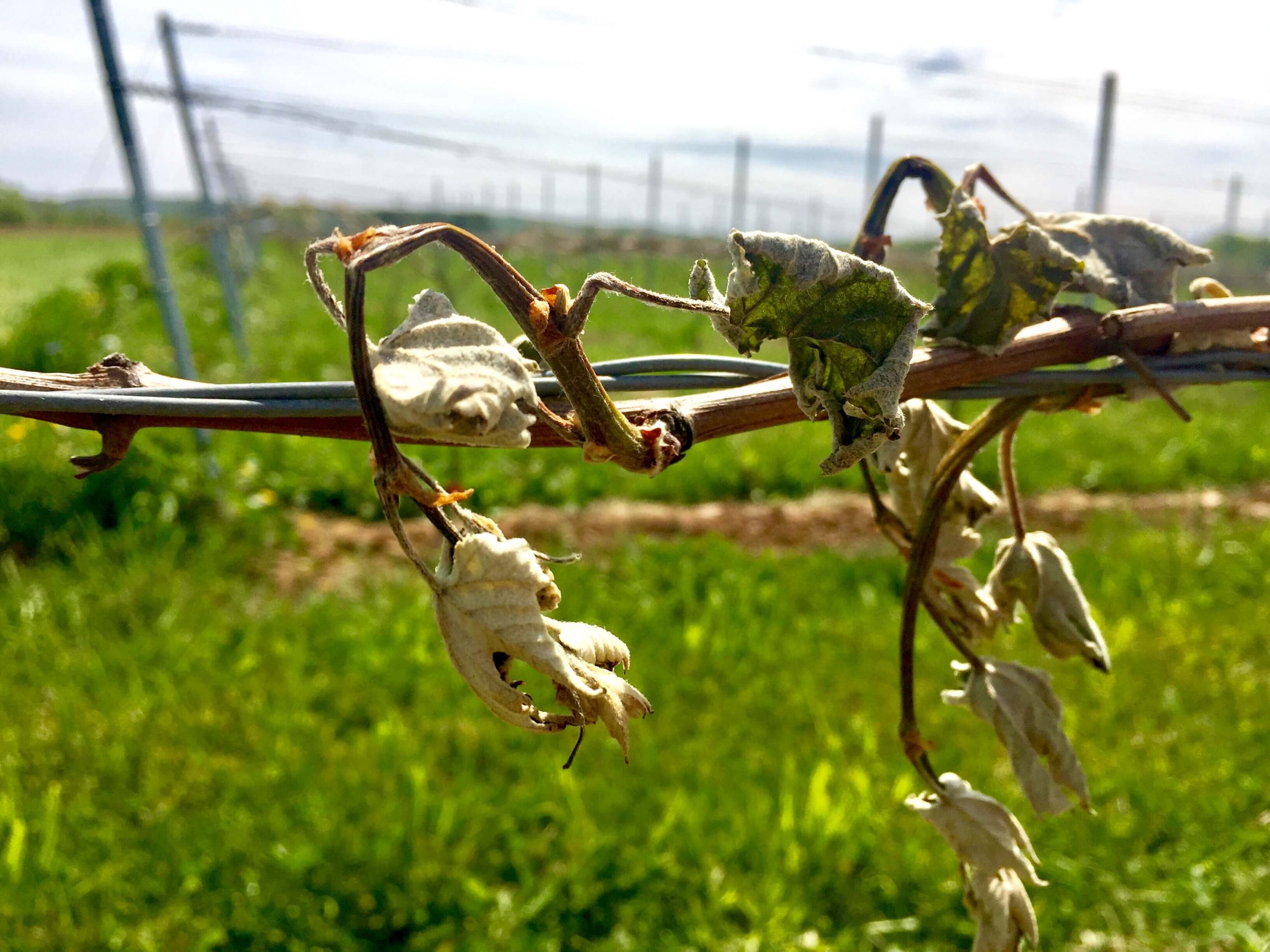
- Micro environments
- The most noticeable risk factor for vine damage was the presence of low lying land either at the bottom of a vineyard slope or simply on a low lying field. Another major risk factor was vine proximity to the ground. The closer to the ground the leaves were the more the damage. New plantings from last year were the hardest hit. Top wire fruiting canes (eg. Muscat) were the least damaged. Vines placed on fruiting wires that were close to the ground (in an attempt to benefit from the heat radiating from the soil) were badly damaged. L’Acadie vines were sometimes spared as were Muscat which were a little slower to bud out. The new clusters seemed to deteriorate over the next couple of days and turned brown. Vines located near buildings and towns (Wolfville) seemed to have less damage. Perhaps warm air exuding from the buildings was beneficial. Surrounding trees had some beneficial effect. Trees at the bottom of sloping vineyards allowed cold air to pile up.

- Prevention
- Burning large bales of hay didn’t seem to help. The heat went straight up in the still air. To be effective heating devices would need to be placed at numerous sites within the rows. Windmills might have been helpful in replacing cold air at ground level with warmer air from above. My field observations suggested that there was some potential for this to happen (there was an obvious layering effect of cold air at the bottom that caused most of the damage). The least damaged vineyard that I saw was on the North Mountain facing south with little slope. Low lying fruiting wires are a frost hazard and should be avoided. New plantings with only a few inches of growth were badly damaged and protective “milk cartons” did not help. Grow tubes were used at Johnston Vineyards last year and most vines were up to the fruiting wire by fall. In a less severe frost this might have attenuated damage in the taller plants. A helicopter was considered by at least one winery but it didn’t fly in the dark so it was not used. Spraying potassium 36-48 hours before the frost was an option considered by Johnston Vineyards, but due to the cold weather preceding the frost that would have contributed to a reduction in vine metabolism this was not pursued.
- Recovery
- Secondary and tertiary buds will likely leaf out but will not produce many grapes. Secondary buds from high yield hybrid varieties like Vidal and Seyval may crop more than vinifera vines. Winter pruning may be affected by the loss of shoots available for next years fruiting canes. Stressed vines, especially vinifera, may be prone to mildew and crown gall.
- Repercussions
- There will be a shortage of Nova Scotia wine in 2019. Prices may go up on wine that is made. This will not be good for NS wines as the prices are already high compared to much of the competition. Bulk wine or unprocessed grapes could be brought in from Ontario or South America and labeled “international” but that might increase consumer skepticism for future NS vintages. If done in combination with production of small amounts of NS wine it may be excused by local wine drinkers aware of the severity of crop failure in 2018. With no vines to tend, field workers will be unemployed for part of the summer. Some smaller vineyards and wineries may be forced to close due to lack of cash flow caused by the grape shortage.

